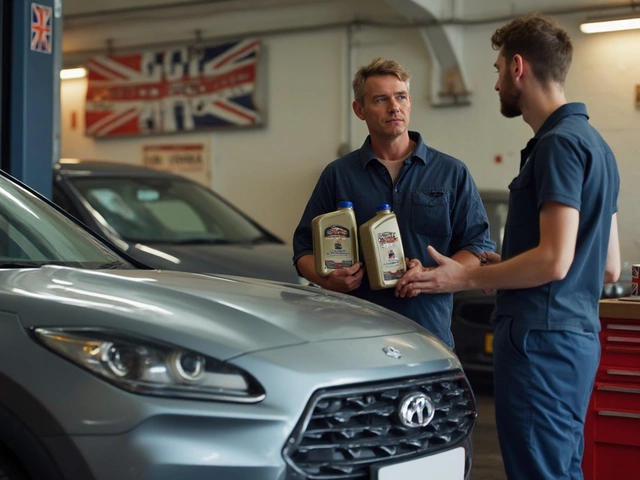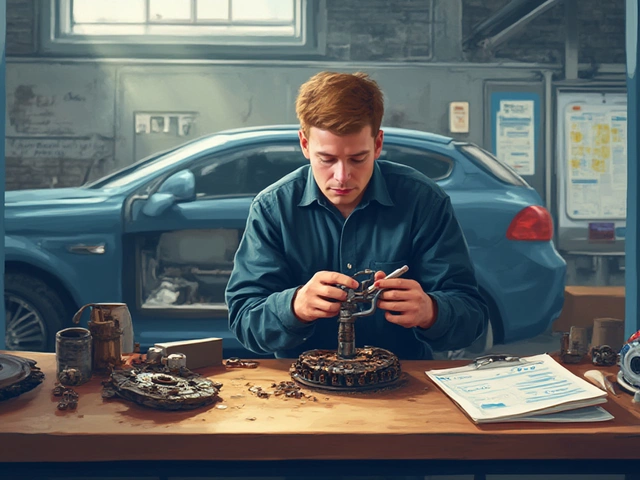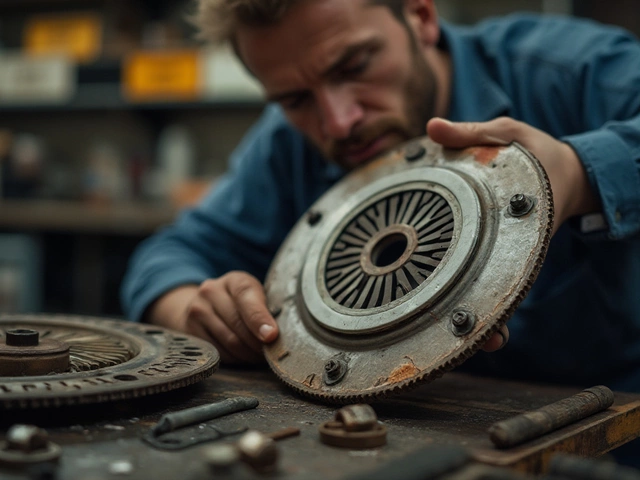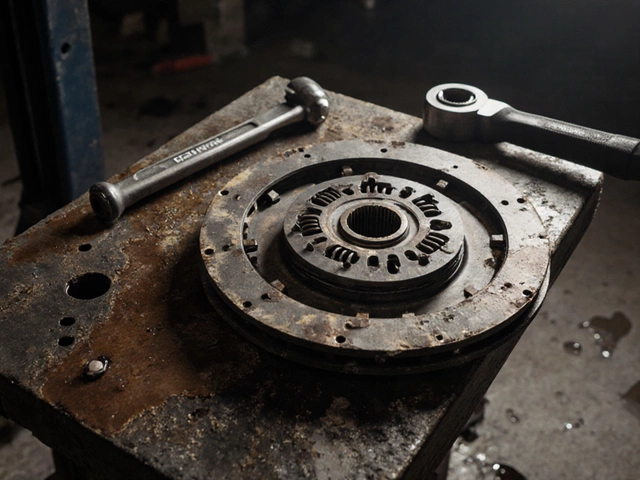Clutch Wear Calculator
How's Your Clutch?
Calculate your clutch condition based on mileage, vehicle type, and driving habits. Get a realistic assessment of when you might need replacement.
Most drivers assume their clutch will last the life of the car. That’s not true. A clutch isn’t a lifetime part. It wears out. And if you wait too long to replace it, you could end up stranded with a broken transmission, a damaged flywheel, and a repair bill that’s three times what a simple clutch job should cost.
Typical Clutch Lifespan: What the Numbers Really Mean
On average, a clutch lasts between 50,000 and 100,000 miles. But that’s not a rule-it’s a range. Some clutches fail at 30,000 miles. Others go over 150,000. What’s the difference? Driving habits, vehicle type, and terrain.
Manual transmission cars in heavy city traffic? Expect the clutch to wear faster. Constant stop-and-go driving means you’re riding the clutch pedal, slipping it to avoid stalling, or holding it halfway down at red lights. Each of those habits burns through the friction material.
Trucks and performance cars? Their clutches are built tougher. A Ford F-150 with a heavy-duty clutch might go 120,000 miles without issue. A Honda Civic driven gently on highways? Could easily hit 140,000. But a Subaru WRX driven aggressively on back roads? Might need a new clutch by 60,000.
The real answer isn’t mileage-it’s condition. You don’t wait for a calendar date. You watch for signs.
7 Clear Signs Your Clutch Is Worn Out
Don’t wait for the clutch to fail completely. Here’s what to look for:
- Slipping clutch - When you press the gas and the engine revs higher but the car doesn’t speed up. It feels like the engine is disconnected from the wheels. This happens because the clutch plate can’t grip the flywheel anymore.
- Soft or spongy pedal - The clutch pedal goes all the way to the floor with little resistance. That’s air in the hydraulic line or a worn master cylinder, but it often means the clutch itself is failing too.
- Grinding noises when shifting - If you hear metal-on-metal grinding when you shift gears, even with the pedal fully pressed, the clutch isn’t fully disengaging. That’s a sign of wear or misalignment.
- Difficulty getting into gear - Especially first gear or reverse. If you have to force the shifter or double-clutch just to get in, the clutch isn’t releasing properly.
- Clutch pedal feels higher than normal - As the friction material wears down, the pedal travel changes. If you’re now pressing the pedal much closer to the floor to get the same result, the clutch is thinning.
- Burning smell - A smell like overheated brakes or burning rubber? That’s the clutch plate glazing or charring from excessive slipping. Don’t ignore this.
- Car jerks or surges when starting from a stop - If the car lurches forward unevenly when you release the clutch, the friction surface is unevenly worn or contaminated with oil.
If you notice even one of these signs, get it checked. Two or more? You’re in clutch replacement territory.
What Causes Premature Clutch Failure?
Most clutches don’t fail because they’re old. They fail because of how they’re used.
- Left foot resting on the pedal - Even light pressure keeps the release bearing engaged. That constant friction wears out the bearing and the clutch disk faster. Your foot belongs on the floor, not hovering.
- Riding the clutch on hills - Holding the car on a hill with the clutch instead of the brake? You’re grinding the friction material. Use the parking brake or gently roll forward.
- Aggressive launches - Flooring it from a stop in first gear? That’s a quick way to burn through a clutch. Especially in high-torque vehicles.
- Oil leaks - If your engine or transmission is leaking oil onto the clutch plate, it becomes slick. No grip. No power transfer. Just smoke and a bad smell.
- Wrong clutch kit - Aftermarket performance clutches are stiffer and harder to drive daily. If you installed a racing clutch for street use, you’ll wear it out faster and get tired of the heavy pedal.
Clutch failure isn’t always bad luck. Sometimes, it’s just bad habits.
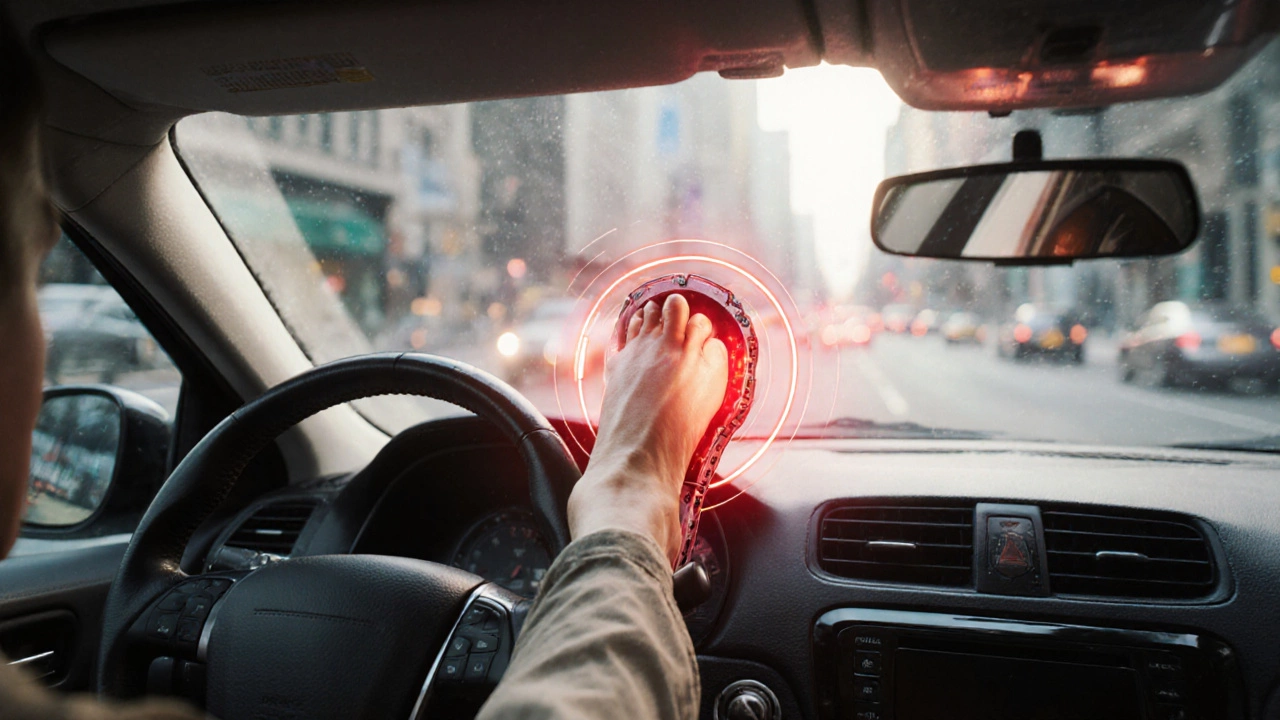
Clutch Kits: What’s Inside and What You Should Buy
When you replace a clutch, you don’t just swap the friction disk. A full clutch kit includes:
- Clutch disc - The part that wears out. Made of friction material pressed between two metal plates.
- Pressure plate - Springs and a cover that clamp the disc to the flywheel. Worn springs lose tension, leading to slipping.
- Release bearing (throw-out bearing) - Pushes against the pressure plate to disengage the clutch. Often the first part to fail from constant use.
- Alignment tool - A simple plastic or metal rod that centers the clutch disc during installation. Skip this, and you’ll damage the input shaft.
Some kits also include a new pilot bearing or bushing, especially in older vehicles. Always check what’s included. Don’t assume.
Buy OEM or reputable aftermarket brands like Sachs, LUK, or EXEDY. Cheap no-name kits from eBay or Amazon often use low-grade materials. They might save you $100 upfront, but they’ll wear out in 20,000 miles and cost you more in labor to replace again.
Should You Replace the Flywheel Too?
It’s not always required-but it’s smart.
The flywheel is a heavy steel disc bolted to the engine crankshaft. It smooths out power delivery. But over time, it gets worn, scored, or warped from heat and friction.
If your flywheel is smooth and free of deep grooves or blue discoloration (sign of overheating), you can reuse it. But if it’s damaged, resurfacing it is risky. Most shops won’t resurface a flywheel more than once. And if you’re already paying for labor to pull the transmission, why not replace it now?
For high-mileage vehicles or performance applications, replace the flywheel with a new one. Dual-mass flywheels (common in modern diesels and luxury cars) are expensive but necessary. Replacing them with a single-mass version might save money-but it’ll make the car vibrate and feel rough.
How Much Does a Clutch Replacement Cost?
Parts alone: $300-$800, depending on the car and kit quality.
Labor: $500-$1,200. Why so high? Because the transmission has to be removed. That’s 5-8 hours of work, depending on the vehicle. Some cars, like the Subaru Impreza, are easier. Others, like the BMW E90, take longer.
Total: $800-$2,000. That’s a big bill. But it’s cheaper than a damaged transmission. A failed clutch can break the input shaft, damage the synchronizers, or even crack the bell housing. Those repairs? They start at $3,000.
Shop around. Get quotes from independent mechanics, not dealerships. Many independent shops use OEM parts and charge less. Ask if they include a new release bearing and alignment tool. If they don’t, it’s a red flag.
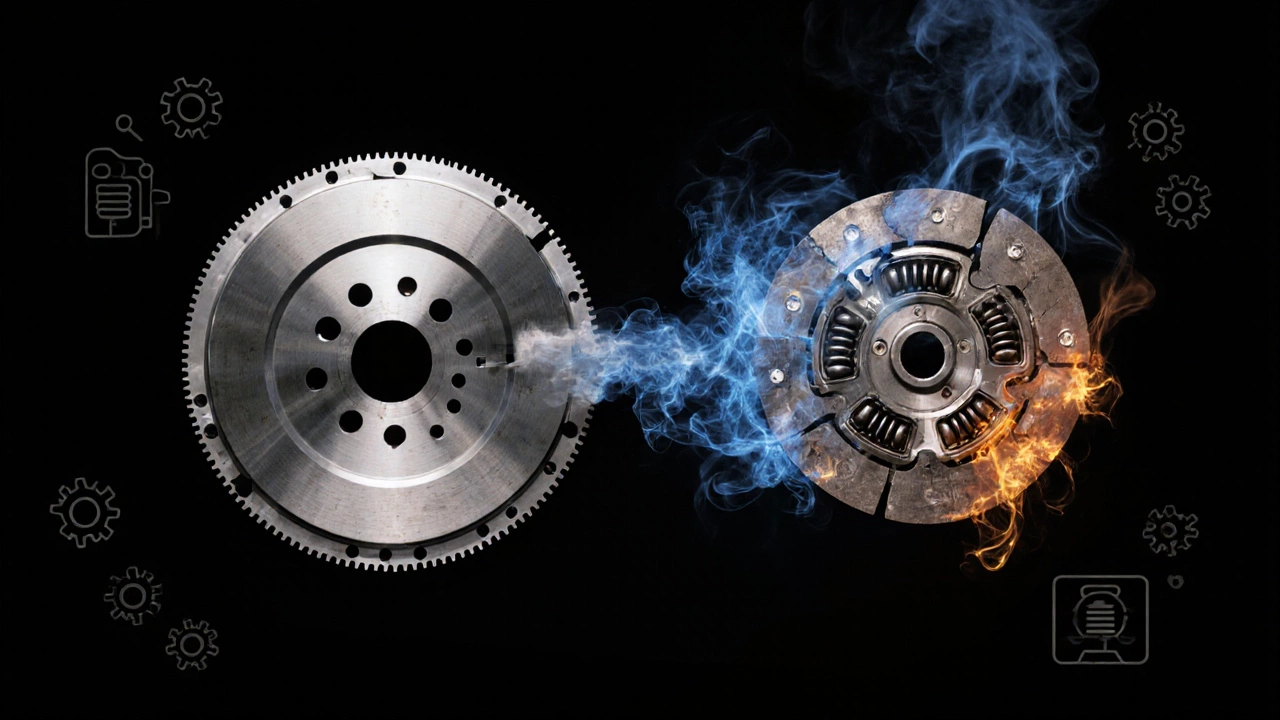
When to Replace Your Clutch: A Simple Decision Guide
Use this quick checklist:
- Replace now if you notice slipping, burning smell, or grinding.
- Monitor closely if you’re at 80,000+ miles and no symptoms yet. Check every 5,000 miles.
- Replace preemptively if you’re planning a long road trip, towing, or driving in hilly areas.
- Don’t wait if you’re buying a used manual car with 100,000+ miles. Assume the clutch is worn and budget for replacement.
Clutches don’t fail suddenly. They fade. Like brake pads. You get warning signs. The trick is paying attention.
What Happens If You Don’t Replace a Worn Clutch?
You might keep driving for a while. But you’re playing Russian roulette with your transmission.
As the clutch wears, it slips more. That generates heat. Heat warps the flywheel. A warped flywheel causes vibrations and uneven wear. Then the pressure plate fails. Then the release bearing seizes. Then the input shaft gets damaged.
By the time the clutch stops working completely, you’ve likely damaged other parts. And those parts cost more to fix than the clutch ever did.
One driver in Ohio drove with a slipping clutch for six months. When it finally died, the transmission had to be rebuilt. Cost: $3,800. A new clutch kit and labor would’ve been $1,200.
Don’t be that person.
How to Extend Your Clutch Life
Simple habits make a big difference:
- Always come to a complete stop before shifting into reverse.
- Use the parking brake on hills instead of holding the clutch.
- Don’t rev the engine before releasing the clutch.
- Shift smoothly. No jerky movements.
- Keep your foot off the pedal when not shifting.
- Check for fluid leaks under the car regularly.
These aren’t tricks. They’re basics. And they’ll add 30,000-50,000 miles to your clutch’s life.
Can a clutch last 200,000 miles?
Yes, but it’s rare. Most clutches wear out between 50,000 and 100,000 miles. A clutch lasting 200,000 miles usually means the driver has very gentle habits-no aggressive starts, no riding the pedal, and mostly highway driving. Trucks and diesel vehicles with heavy-duty clutches are more likely to hit that mark.
Is it safe to drive with a slipping clutch?
Not for long. A slipping clutch means power isn’t reaching the wheels efficiently. That puts extra strain on the engine and transmission. It also creates heat that can damage the flywheel or pressure plate. Driving with a slipping clutch for more than a few days risks expensive transmission damage.
Do automatic cars have clutches?
They don’t have a foot-operated clutch like manual cars. But automatic transmissions use clutch packs inside the torque converter and planetary gear sets. These are hydraulic and controlled by the car’s computer. They wear too-but you can’t replace them like a manual clutch. If they fail, you’re looking at a full transmission rebuild.
How do I know if my clutch kit includes everything I need?
Check the product listing. A full clutch kit should include the clutch disc, pressure plate, release bearing, and alignment tool. Some include a pilot bearing or input shaft seal. If it doesn’t list these, assume they’re not included. Buy them separately if your vehicle needs them. Skipping parts leads to premature failure.
Can I replace a clutch myself?
Yes-if you have the tools, time, and experience. You’ll need a jack, transmission jack, torque wrench, clutch alignment tool, and a service manual. The job takes 6-10 hours. If you’re unsure about aligning the clutch or bleeding the hydraulic system, it’s better to pay a professional. A misaligned clutch can destroy the transmission input shaft in minutes.


